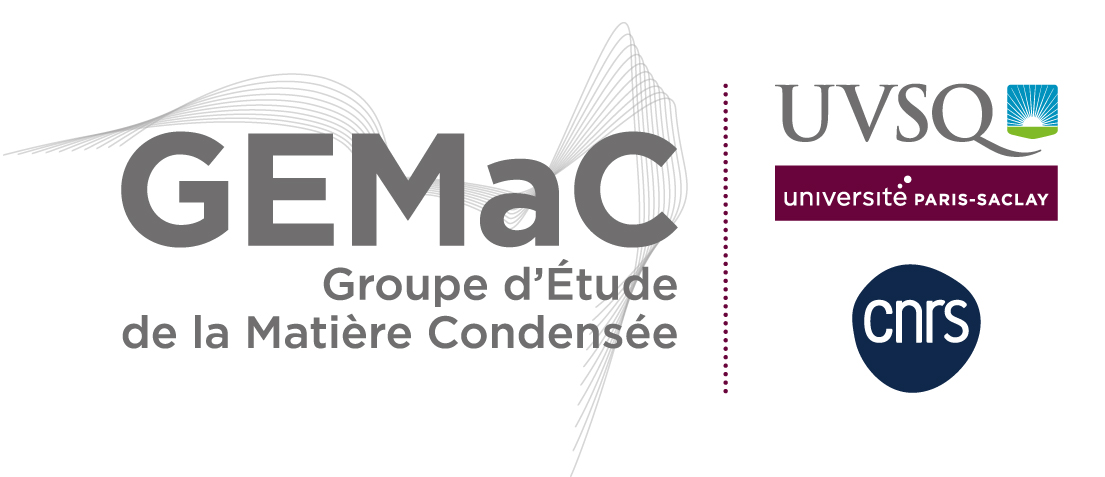You are here : GEMACENOpen positions
- Partager cette page :
- PDF version
Open positions
Jobs and post-doc positions
Master thesis and PhD positions
 | Study of optoelectronic properties of Ga2O3 and ZnGa2O4 thin films October 1, 2022 - September 30, 2025 This experimental PhD project goals the study of optoelectronic properties of « ultra-wide band gap (UWBG) » oxide semiconductors as Ga2O3 of different polymorphs and ZnGa2O4 spinel. |
 | Epitaxy of II-VI semiconductors 1D nanostructures for light emission Abstract October 1, 2022 - September 30, 2025 Semiconductor nanowires open new fields of investigation in fundamental physics and offer unique opportunities for the future generation of electronics, photonics, sensors, actuators, energy, and medical applications. In particular zinc oxide (ZnO) and zinc sulfide (ZnS) nanowires are attractive candidates for optoelectronic devices emitting in the range of the blue-UV range.The aim of the thesis is to realize II-VI nanowires (ZnS, ZnO, ZnSe), vertically oriented, and defects free. The materials will be grown by using Metal-Organic Chemical Vapor Deposition (MOCVD), and more precisely a catalyzed process called vapour-liquid-solid (VLS) for which the nanowire growth is locally triggered and further produced under a gold droplet. Van der Waals epitaxy will also be addressed. The morphology and the structural properties of the grown nanowires will be accurately characterized by scanning electron microscopy (SEM) and transmission electron microscopy (TEM) to understand the growth mechanisms. The optical proper |
 | Towards the quest of dissipative structures and autocatalytic effects in the photo-induced spatiotemporal behaviors of spin-crossover solids October 1, 2022 - September 30, 2025 |
 | Visualization, control and modelling of spatiotemporal aspects of the dynamics of phase transitions in spin transition molecular crystals October 1, 2022 - September 30, 2025 |
 | Controlled single photon sources based on hBN color centers using nanophotonic structures October 1, 2022 - September 30, 2025 The project takes place in the Quantum NanoPhotonics group in GEMaC laboratory. The context is experimental solid-state quantum optics for quantum information. The objective is to realize integrated quantum devices based on visible-range single-photon emitters in hBN with controlled light-matter interaction by including the hBN emitters in nanophotonic structures including in-situ lithographic photonic structures and plasmonic resonators. |
 | Controlling the emission of colloidal quantum dots: from the single photon manipulation to collective effects for the generation of quantum states of light October 1, 2022 - September 30, 2025 The project takes place in the Quantum NanoPhotonics group in GEMaC laboratory. In the field of quantum information science, photons play a crucial role due to their ability to propagate through long distances with very small loss of coherence. In this context, the generation and the manipulation of quantum states of light can benefit from the numerous nanophotonics tools and devices. Modifying the electromagnetic environment of a single photon emitter using cavities [1] enables to fully control the spontaneous emission of a single photon source such as a quantum dot to achieve bright single photon sources (SPSs). In addition, the interplay between an assembly of nanoemitters and plasmonic structures allows to design new types of light sources and to develop light-emitting quantum devices based on strong coupling and superradiance. |





